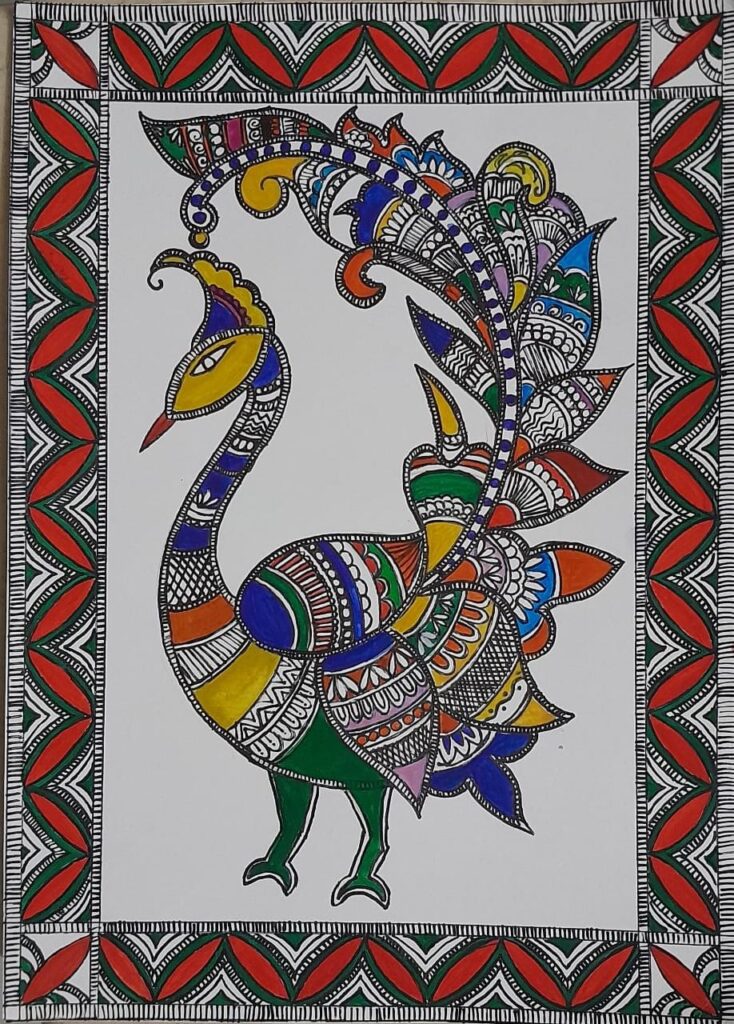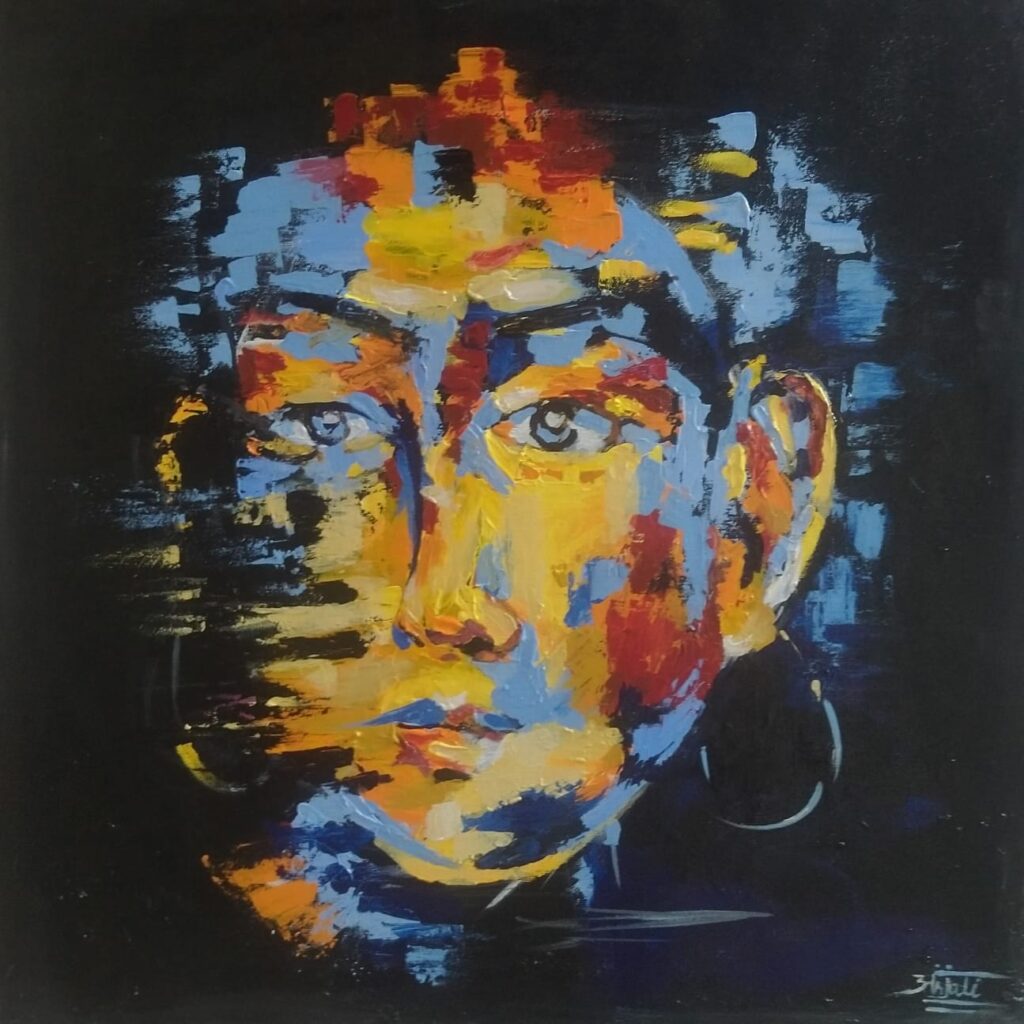Art has the remarkable ability to bridge cultures, tell stories, and capture the essence of a community’s history. One such art form that sums up this unique quality is Madhubani art . A traditional painting style that originated in the Mithila region of Bihar, India. Let’s take a journey into the captivating world of Madhubani art, uncovering its origins, techniques, themes, and enduring significance.

Origins and Cultural Roots:
Madhubani art, also known as Mithila painting, draws its roots from the ancient Indian practice of decorating walls during festivals and celebrations. It gained recognition in the mid-20th century when the Bihar state government encouraged women to create these paintings as a source of income. What started as wall art has now evolved into a globally recognized art form, celebrated for its vibrant colors, intricate patterns, and deeply cultural themes.

Techniques and Aesthetics:
At “The Haat of Art” lies its distinct technique. Traditionally, artists use natural pigments and dyes derived from plants, minerals, and other organic sources. The paintings are characterized by their use of bold lines, geometric patterns, and a double-line border. The colour palette is strikingly vivid, with reds, blues, greens, and yellows dominating the canvas. What makes Madhubani art truly unique is its intricate detailing, where intricate patterns come together to form larger narratives.

Themes and Stories:
Madhubani paintings are not mere visual delights; they are windows into the culture and traditions of the Mithila region. The themes are often drawn from mythology, religious stories, folklore, and day-to-day life. The paintings depict deities like Krishna and Rama, scenes from the Ramayana and Mahabharata, and symbols of love, and prosperity. Each motif carries a symbolic significance, and the stories conveyed through these paintings serve as a cultural chronicle that has been passed down through generations.

Impact and Significance:
Madhubani art is more than just a visual spectacle; it plays a crucial role in preserving and promoting the rich heritage of the Mithila region. Beyond its artistic appeal, Madhubani paintings have become a source of livelihood for many artists, particularly women. The revival and recognition of this art form have empowered women, provided economic opportunities, and strengthened community bonds.

Global Reverberations:
The global art community has welcomed Madhubani art with open arms. Its vibrant colors and cultural resonance have captivated art enthusiasts and collectors worldwide. The fusion of tradition and modernity has led to contemporary adaptations of art, ensuring its relevance in the present age.

Preserving the Legacy:
As we celebrate the beauty and significance of Madhubani art, it’s essential to acknowledge the efforts to preserve and promote this traditional art form. Art organizations, workshops, and exhibitions are playing a pivotal role in ensuring that art continues to flourish and evolve while staying true to its roots.

Art Credit: Preeti Arte
Conclusion of Madhubani Art :
Madhubani art stands as a living testament to the rich cultural heritage of the Mithila region. Its vibrant colours, intricate patterns, and timeless stories offer a glimpse into the heart of a community. As we marvel at the masterpieces created through this art form . Let’s also honour the artists who have preserved and passed down this heritage. It keeping the spirit of Madhubani art alive for generations to come.








Thank you so much for this opportunity 🙏🏻
@thehaatofart
Thank you for taking the time to read our blog. We hope you enjoyed it.
Pingback: Acrylic Art: Where Colours Emerge with Vibrancy and Versatility - The haat of art